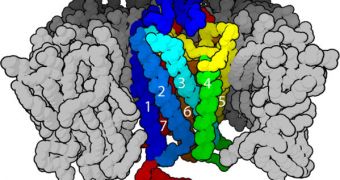For many years, researchers have been trying to model the external and internal structure of proteins, small molecules that play an extremely important role in the human body. Scientists say that no less than 25 percent of all drugs currently approved for human consumption target a family of proteins called G protein-coupled receptors, of which only 5 have been modeled thus far. This lack of progress is owed to the fact that the small compounds have an extremely complex structure.
In addition, they cannot be readily synthesized in molecular biology labs, due to the fact that they are very unstable when taken out of their natural environment, the cellular membrane. Given that these G receptors influence a wide array of phenomena going on inside the human body, ranging from hormone signaling to the perception of light and scent; researchers want to be able to map out the elusive proteins in detail. Such an achievement would ensure that future research efforts aimed at turning the molecules into potent drugs succeed, Nature News reports.
Structural biologists have resumed work on a research effort, dubbed the Protein Structure Initiative (PSI). The $290 million program has been functioning for over a decade, trying to make sense of the elaborate amino-acid folds that make up proteins. Experts now want to shift the focus of the 13 research centers associated with the PSI towards conducting structure studies on relevant proteins, including G receptors. The groups involved in the Initiative have until now been studying proteins that were selected on account of their diversity. Their investigations tool included X-ray crystallography and nuclear magnetic resonance spectroscopy.
In 10 years, the PSI solved only 128 human proteins, and a grand total of 5,000 proteins from multiple species. It is currently estimated that, globally, structure initiatives have only determined how the folds of only 1 percent of protein families look like. “A lot more structures can be modeled now than could be modeled five years ago, and that's thanks to the PSI. But for the majority of the biological community, it just wasn't that interesting,” says Karolinska Institute in Stockholm structural biologist Johan Weigelt.

 14 DAY TRIAL //
14 DAY TRIAL //